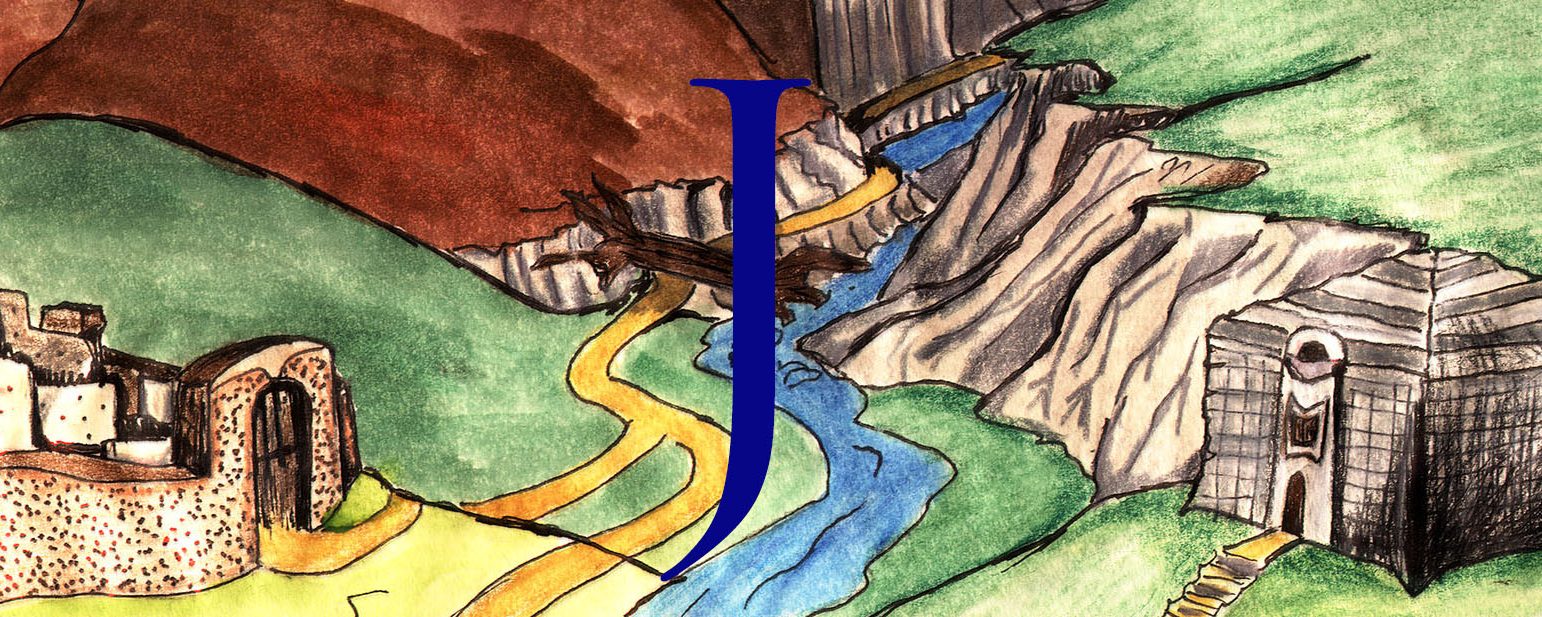Traitor Tad: A Real Battle
The morning after the hangings were displayed to the whole system, Tad was still concentrating on the logical problems with his situation. Here they were on a planet with effectively no defense, but nobody really seemed to notice. He remembered that he had always assumed the real fighting was somewhere else, yet he thought he would have gotten suspicious given a few more hours. The idea of carrying out a massacre just didn’t sit very well with him, and he thought others might feel the same way.
When he presented the problem to the shuttle AI, it refused to explain it to him, saying that human behavior was something he’d have to figure out on his own. He then asked if there had been real battles with real aliens elsewhere, or whether it was all a sham. The shuttle stated that there had been real battles, though not all of them had been reported precisely as they had happened. Asked for examples, the shuttle just said he needed to be more specific.
This is a work of fiction. All persons, places, and events are products of my imagination. It is part of my Traitor Tad science fiction series. Copyright © Henry E. Neufeld.
He’d just settled in to scan through some battle reports, when he was interrupted again.
“You have a call from a Colonel Dogger,” said the shuttle.
“Who is Colonel Dogger?”
“He commands the 411th armored battalion.”
“What does he want?”
“To talk to you.”
“You didn’t think to ask him why?”
“I haven’t even answered him. You have to do that. This unit won’t communicate with him.”
“So should I answer him?”
“You have to decide that, but his calls are getting more urgent.”
“Very well, put me through.”
In a moment he heard the call: “Traitor Tad, this is Colonel Dogger, commanding an armored battalion. Please respond.” The voice sounded professional, but he could hear extreme stress in the tone. The protocol was bad–only callsigns were used; never personal names, but since he would neither have a callsign, nor could he be expected to recognize the Colonel’s callsign, he could understand the reasoning.
“This is Tad. What do you want?” He still refused to call himself Traitor Tad.
“I’m moving toward your position. I intend to defect, but my intentions have become known. I’m currently being pursued by a total of four battalions. If you have access to intelligence networks, I need information on enemy deployments.”
Tad muted his microphone and asked the shuttle to verify the activity. “Yes, there are armored movements that conform to the Colonel’s description.”
“Is it a good idea to allow this man into our area?”
“I cannot answer that kind of question. You need to be more specific.”
Tad thought for a moment. “Are there stress indicators in his voice that indicate he’s lying?”
“He is under great stress, but there is a greater than 99% chance he is sincere in his intentions.”
“I will need his commitment not to fire on the aliens.”
“You can ask him, and I will indicate truthfulness.”
Tad opened the microphone again. “Colonel, this is Tad.”
“Go ahead.”
“I need your commitment not to fire on the aliens.”
“I’m definitely not going to do that! It’s because of them I’m defecting. These creatures are totally harmless!”
“Very well, I will arrange for information to be fed to you.”
He muted the microphone again. “I didn’t ask if we could interface with him. I just assumed.”
“We can interface.”
“Can we do so without feeding information to the other side?”
“We can.”
“In that case, do it.”
He opened the mic to the Colonel again. “Colonel, you should start getting full information from us through your standard data net.”
Colonel Roland Dogger watched as his display altered. He had been cut off from the network as someone at the division’s headquarters got an idea of what he was doing. Since Traitor Tad had defected, any sort of unusual behavior was deemed sufficient cause to remove an officer from command. He’d been ordered to stand down, and then abruptly he’d lost all information from the net outside his own vehicles. He knew he was being pursued, but he had no precise information.
Now suddenly at Traitor Tad’s command his screens lit up with the information he was used to, read from satellites and various observation posts. He knew precisely where his pursuers were, and the picture wasn’t good. He had been certain of pursuit by four battalions, and they were closer than he had thought. He was surprised they hadn’t used indirect fire on him. The tank guns were primarily designed for direct fire and relatively short ranges. In this terrain, it was not the guns’ ranges that normally limited fire; it was the terrain. At need they could be elevated and used as basic artillery. At four battalions to one, he was pretty sure he’d lose that duel.
Yes the 4 to 1 odds made sense of the closer approach as well. Single shots from these tanks could disable and even possibly destroy the target vehicle, and the person who knew what was over the hill had every chance of firing that crucial first shot. By approaching, they took away his chance to determine their position by backtracking their fire. He reflected on how totally dependent he was on the satellites. And how was it that Traitor Tad could get him a display?
He’d just have to be thankful that he could! Still, he could see no reasonable way out. His one advantage was that the attacking battalions would not quite be able to surround him. He was headed a bit north of due west, and only one battalion was to his north. Unfortunately, nothing he could think of would prevent the other three from getting a shot at him, and if he wasn’t careful, so would the fourth which was coming in from the north.
Then he thought of the ECM gear. They hadn’t used it in some time. He had trained on it, but since there were no detectible electronic signals here, they hadn’t really tried to use it. His main question was whether such measures would work against his own forces—or what had been his forces—or whether he’d show up with his exact position because he was still part of the net.
He called Tad again. “Am I still in the same location net with the brigade?” he asked. “Will they be able to see my precise position if I try countermeasures?”
Tad had to ask the shuttle that question in turn. “Countermeasures will work as normal. I have created a separate net.”
Dogger looked for just the right point on the map. Ahead there was a place where he would either have to climb a high cliff, which was barely possible but very difficult for his tanks, or run near it to the north for a few miles, allowing his opponents to shoot downward at the tops of his tanks.
He looked at the courses being taken by the three battalions to the south, and he saw that they converged in the area. The general had obviously seen the same possibility. He’d expect Dogger to avoid the location. But Dogger felt that the general would assume he’d run straight and fast as he had been doing.
One possibility of his countermeasures was to divert radiation, including light and reflected radiation in such a was as to show his position as something different than it was. It was a particularly easy sort of deception to see through, either with a little thought or by having your own electronic warfare specialists simply look for it. The more tanks were involved, the more likely it was someone would spot discrepancies in the reflected radiation especially, and he had 37 main battle tanks and an assortment of smaller vehicles and infantry transports. (See Military Units in Traitor Tad’s Universe.)
But it was, he thought, his best chance, and there was a strong possibility nobody would think of it. Not only was it rarely used outside of training, it was hardly what one would think of using against one another.
So he simultaneously ordered his tanks to maximum speed, ignoring safety margins, and set his ECM to show his tanks progressively further and further behind. The odds were good there would be some discrepancy, but with his current speed, he thought the general would have less than two minutes to figure out what was going on.
He was right—up to a point. As he came up along side the cliffs, the general’s staff did, in fact, spot the issues with his electronic deception, but the initial operator saw it as a shadow battalion, one that was positioned almost due west of Dogger’s battalion. This placed it at the top of the cliff, and suggested that there were two battalions, one approaching the base of the cliffs, and one south and west of it, positioned to fire as the rest of the brigade approached.
In fact, what the operator thought was Dogger’s battalion was the shadow, while the shadow was Dogger’s battalion, preparing to fire as the brigade came into range. Due more to the incompetence of Dogger’s electronic warfare people than to any plan, several shadow battalions were reported, and before the staff had time to sort the sightings out, they came into range, and Dogger’s tanks fired.
It was like a scene from the worst hell the general had ever imagined. He had never been in a fight with serious casualties from hostile fire, and suddenly he was faced with a surprise attack from 37 main battle tanks. That wouldn’t have been sufficient, however, except that he was being told there were several more battalions of rebels. He had no idea how they could be there; his was the only armored brigade in the area.
Without even pausing to try to return fire, which might not have been possible in any case, he ordered the remaining tanks to retreat, leaving 20 disabled tanks on the field. A number of those still able to retreat were severely damaged. Dogger took no casualties at all, if one didn’t count a single tank whose engine failed. The crew was taken aboard the nearest tank and Dogger and his battalion continued to their rendezvous with the great traitor.
To be continued . . .
[Previous episode] [Next episode]
Discover more from The Jevlir Caravansary
Subscribe to get the latest posts sent to your email.


